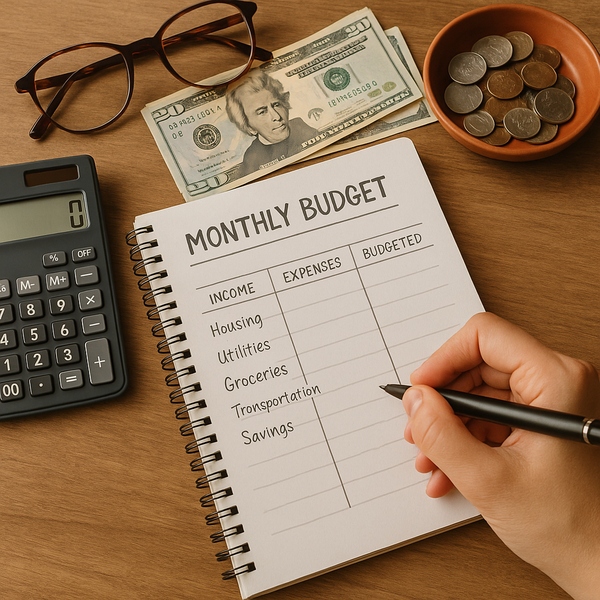
Taking control of your personal finances starts with a clear understanding of where your money goes each month. Creating a monthly budget isn't about restricting your spending but rather about giving every dollar a purpose. It's a powerful tool that helps you achieve financial goals, whether saving for a down payment, paying off debt, or simply building a healthy emergency fund.
Understanding Your Income
The first crucial step in creating any budget is accurately determining your total monthly income. This includes all sources: your regular paycheck, freelance income, benefits, or any other money you consistently receive. If your income varies from month to month, it's often wise to use a conservative estimate, perhaps averaging your income over the past few months or using your lowest income month as your baseline. Knowing your exact starting figure is fundamental; it's the foundation upon which your entire spending and saving plan will be built. Be thorough and honest in this step to avoid overestimating your available funds.
Tracking Your Expenses
Once you know your income, the next vital step is tracking your expenses. Many people underestimate how much they spend, especially on small, frequent purchases. For at least a month, meticulously record every single expense. This can be done using a notebook, a spreadsheet, budgeting apps, or linking your bank and credit card accounts to financial tracking software. Categorize your spending as you track it (e.g., housing, transportation, food, entertainment, utilities). This step is eye-opening and provides a realistic picture of your spending habits. It's impossible to budget effectively if you don't know where your money is actually going.
Categorizing Your Spending
After tracking for a period, review your expenses and group them into categories. These fall into two main types: fixed expenses and variable expenses. Fixed expenses are those that stay roughly the same each month, like rent or mortgage payments, loan payments, and insurance premiums. Variable expenses fluctuate, such as groceries, utilities (sometimes), gas, dining out, and entertainment. Understanding the difference helps you identify areas where you might have flexibility to cut back if needed. Common categories include housing, transportation, food, utilities, insurance, debt payments, savings, and personal spending.
Setting Financial Goals
Before you allocate money, define what you want your money to do for you. Are you saving for a specific goal like a vacation, a car, or retirement? Are you focused on paying off high-interest debt? Do you need to build an emergency fund covering 3-6 months of living expenses? Setting clear, measurable financial goals gives your budget purpose and motivates you to stick to your plan. Your budget should reflect these goals, allocating specific amounts towards them each month as if they were bills. Prioritizing goals helps guide your spending decisions.
Building Your Budget Plan
Now, it's time to assemble your budget. Subtract your total tracked expenses from your total income. Ideally, your income is greater than your expenses, leaving you with surplus money you can allocate towards savings or goals. If your expenses exceed your income, you know you need to make adjustments. There are different budgeting methods you can use. The 50/30/20 rule suggests allocating 50% of income to needs, 30% to wants, and 20% to savings and debt repayment. The zero-based budget assigns every dollar of income a specific job (spending, saving, debt), so income minus expenses minus savings equals zero. Choose a method that resonates with your financial situation and personality.
Using Budgeting Tools
Managing a budget manually can be tedious. Fortunately, numerous tools are available to help. Spreadsheet software like Excel or Google Sheets allows for custom budget templates. Many free and paid budgeting apps (like Mint, YNAB, PocketGuard) automate tracking by linking accounts, categorize spending, set reminders, and provide visual reports. Finding a tool that fits your comfort level and provides the features you need can significantly simplify the budgeting process and help you stay organized. Experiment with a few to see which one works best for you and your lifestyle.
Sticking to Your Budget
Creating the budget is only half the battle; sticking to it requires discipline and conscious effort. Regularly review your spending throughout the month to ensure you are on track. Use the categories you established to monitor where your money is going relative to your plan. Be mindful of your spending decisions, especially for variable expenses. If you overspend in one category, look for ways to reduce spending in another to compensate. Think of your budget as a roadmap, guiding your financial journey month by month. Staying engaged with your budget increases your likelihood of success.
Reviewing and Adjusting Your Budget
A budget is not a set-it-and-forget-it tool. Life happens, and your financial situation or goals may change. Set aside time each month, perhaps before the new month begins, to review how the previous month went. Did you stay within your limits? Were your allocations realistic? Are your financial goals still the same? Adjust your budget as needed based on your performance, changes in income or expenses, or evolving goals. Regular review and adjustment ensure your budget remains a relevant and effective tool for managing your money and making financial progress.
Implementing a monthly budget is a foundational step towards financial wellness. It provides clarity, reduces stress, and empowers you to make informed decisions about your money. While it requires initial effort and ongoing attention, the benefits of having a clear financial plan – from achieving savings goals to gaining peace of mind – are invaluable. Start simple, be patient with yourself, and commit to making budgeting a regular part of your financial routine.

